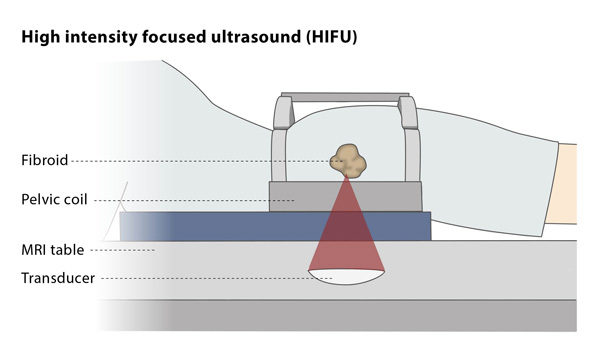What is HIFU?
High-intensity focused ultrasound (HIFU) is a non-invasive therapy that uses focused ultrasound waves to thermally ablate a portion of tissue, meaning the tissue is destroyed using intense heat. The intense heat causes tissue coagulation necrosis, cavitation and heat shock in the cells, meaning that the portion of tissue which is being ablated is destroyed.
How does the procedure work?
High power ultrasound can be focused on a targeted point to raise the temperature to 70-80°C.
HIFU uses sonication (sound energy) to create this heat. Each sonication heats only a small focal target, so the interventional radiologist will use multiple sonications to ablate the whole affected area. The interventional radiologist may use diagnostic sonography with focused ultrasound (USgFUS or USgHIFU) or magnetic resonance guidance with focused ultrasound (MRgFUS).

